Non-Surgical Knee Relief With PRP Injections in Barrington, IL
At Regency Medical Spa and Hair Restoration Clinic in Barrington, IL, our experienced team offers PRP (Platelet-Rich Plasma) injections as a non-surgical solution for knee pain relief. By using the body’s own platelets, PRP promotes healing and reduces inflammation in the knee joint. This treatment can improve mobility and help manage knee pain without the need for invasive surgery. For more information, contact us today or book an appointment online. We are conveniently located at 300 Fox Glen Court Barrington, IL 60010.




Table of Contents:
How does PRP help relieve knee pain?
What conditions can PRP treat in the knee?
Who is a good candidate for PRP knee injections?
How long does PRP knee treatment take?
Platelet-Rich Plasma (PRP) therapy helps relieve knee pain by using the body’s own natural healing components to target the underlying cause of inflammation and tissue damage. PRP is derived from a sample of the patient’s own blood, which is processed to concentrate the platelets and growth factors. These components are then injected directly into the affected knee joint to stimulate tissue repair, reduce inflammation, and promote regeneration of cartilage, tendons, or ligaments.
In cases of knee osteoarthritis, PRP can help slow the degenerative process and ease symptoms such as stiffness, swelling, and limited mobility. The growth factors released by platelets work to activate the body’s healing response, encouraging cell repair and collagen formation in the joint. This biologic approach offers a more restorative alternative compared to traditional pain-relief methods like corticosteroid injections, which may provide only short-term relief.
Patients often notice a gradual decrease in pain and improvement in function within a few weeks following treatment, with benefits continuing to build over several months. Since PRP uses the body’s own components, there is minimal risk of adverse reaction, making it a safe and effective option for many individuals.
PRP is especially helpful for those looking to avoid or delay surgery, offering a non-surgical option for managing chronic or activity-related knee pain. When administered by a qualified provider, PRP therapy can play a significant role in restoring mobility and enhancing the quality of life for individuals dealing with persistent knee discomfort.
PRP (Platelet-Rich Plasma) therapy can effectively treat a range of conditions affecting the knee joint by harnessing the body’s natural healing mechanisms. Among the most common conditions PRP is used for is knee osteoarthritis, particularly in the early to moderate stages. PRP can help reduce inflammation, ease joint stiffness, and slow cartilage degradation, making it a viable option for patients who wish to delay surgical intervention.
In addition to osteoarthritis, PRP is often used to address ligament injuries, such as partial tears in the anterior cruciate ligament (ACL) or medial collateral ligament (MCL), where it helps accelerate healing and improve joint stability. Tendon injuries around the knee, like patellar tendinitis (also known as jumper’s knee), can also benefit from PRP injections. The therapy supports tissue repair by stimulating collagen production and improving blood supply to the injured area.
Meniscal injuries, especially those that are degenerative rather than traumatic, may also respond well to PRP. Since the meniscus has a limited blood supply, PRP injections can help promote regeneration and reduce pain in cases that are not ideal for surgery. Additionally, PRP is sometimes used post-surgically to enhance healing and shorten recovery time.
PRP is not typically used for complete ligament tears or cases with severe joint deformity, but may complement other therapies. Its regenerative approach makes it a valuable tool for treating chronic, inflammatory, or degenerative knee issues, especially when combined with physical therapy and proper activity modifications.
A good candidate for PRP knee injections is typically someone experiencing knee pain due to mild to moderate osteoarthritis, tendonitis, or soft tissue injuries who is seeking a non-surgical option for relief. Ideal candidates are those who have not responded well to traditional treatments like physical therapy, anti-inflammatory medications, or corticosteroid injections but are not yet ready or suitable for surgical intervention.
Patients with early-stage osteoarthritis often benefit the most from PRP, as the therapy can slow joint degeneration and improve symptoms like stiffness, swelling, and limited mobility. Athletes or physically active individuals suffering from overuse injuries—such as patellar tendinitis or partial ligament tears—may also respond well to PRP due to its regenerative properties and relatively quick recovery time.
Good candidates are generally in overall good health, as chronic conditions like uncontrolled diabetes or severe anemia may affect the body’s ability to heal effectively. Additionally, individuals who avoid smoking, maintain a healthy weight, and follow recommended activity modifications tend to experience better outcomes from PRP therapy.
PRP may not be suitable for those with advanced arthritis, joint deformity, or completely torn ligaments, as these cases often require surgical treatment. A comprehensive evaluation by a medical professional—including imaging and physical assessment—is essential to determine if PRP is appropriate for your knee condition.
Ultimately, PRP is best for individuals looking for a natural, low-risk therapy to improve joint function, reduce pain, and delay the need for more invasive procedures.
PRP knee treatment is a relatively quick, outpatient procedure that typically takes about 45 to 60 minutes from start to finish. The process begins with a standard blood draw, usually taken from the arm, similar to a routine lab test. The blood sample is then placed in a centrifuge, where it is spun at high speeds to separate the platelet-rich plasma from other blood components. This process takes about 10 to 15 minutes.
Once the PRP is prepared, the area around the knee is cleaned and sometimes numbed with a local anesthetic. Using diagnostic tools, the provider then carefully injects the concentrated PRP directly into the affected area of the knee joint. The injection itself usually takes only a few minutes. Patients may be asked to remain in the office briefly afterward for observation before being discharged.
While the procedure is short, post-treatment guidelines may recommend avoiding strenuous activity for a few days. Mild soreness or swelling is common for 24 to 48 hours as the healing process begins. Full results often take several weeks to develop as the platelets work to stimulate tissue repair and reduce inflammation.
Most patients can return to normal daily activities within a day or two. Depending on the condition being treated, a series of one to three injections may be scheduled several weeks apart to achieve the best outcome. The efficiency and minimal downtime make PRP an attractive option for those seeking relief from chronic knee pain without surgery.
Experience non-surgical knee relief with PRP in Barrington, IL, designed to reduce pain and enhance mobility. PRP therapy uses your body’s natural healing properties to restore joint function. If you’re looking for effective treatment, visit Regency Medical Spa and Hair Restoration Clinic in Barrington, IL, today. For more information, contact us today or book an appointment online. We are conveniently located at 300 Fox Glen Court Barrington, IL 60010. We serve clients from Barrington IL, Deer Park IL, Inverness, Kildeer IL, Long Grove IL, Barrington Hills IL, Lake Zurich IL, North Barrington IL, Port Barrington IL, South Barrington IL, Tower Lakes IL and BEYOND!

Additional Services You May Need
▸Bellafill
▸Belotero
▸Botox
▸Brazilian Butt lift
▸Brazilian Butt lift Radiesse
▸Brazilian Butt lift Sculptra
▸BroadBand Light (BBL)
▸Brow Tinting
▸B12 for IV Therapy
▸B12 for Weight Loss
▸Cellulite
▸Chemical Peels
▸Custom Facials
▸Custom Massages
▸Dysport

Additional Services You May Need
▸Bellafill
▸Belotero
▸Botox
▸Brazilian But lift
▸Brazilian But lift Radiesse
▸Brazilian But lift Sculptra
▸BroadBand Light (BBL)
▸Brow Tinting
▸Cellulite
▸Chemical Peels
▸Custom Facials
▸Custom Massages
▸Dysport
▸EmSculpt
▸Exilis
▸Facial and Body Waxing
▸Forever Bare BBL Hair Laser Removal
▸Hair Restoration
▸Human chorionic gonadotropin (HCG)
▸HydraFacial
▸Injectables
▸IV Therapy
▸Isagenix
▸Juvederm
▸Kybella – PCDC
▸Laser Hair Removal
▸Laser Skin Tightening
▸Laser Treatment
▸Latisse Eyelash Growth
▸Lip Filler
▸Medical Weight Loss
▸Morpheus8
▸Myers Cocktail
▸Neurotoxins
▸Non-Surgical Body Contouring
▸Non-Surgical Face Lift/Tightening
▸Nova PDO Threads
▸Permanent Makeup
▸Skinvive
▸Skin Tyte
▸Sculptra
▸All Services



